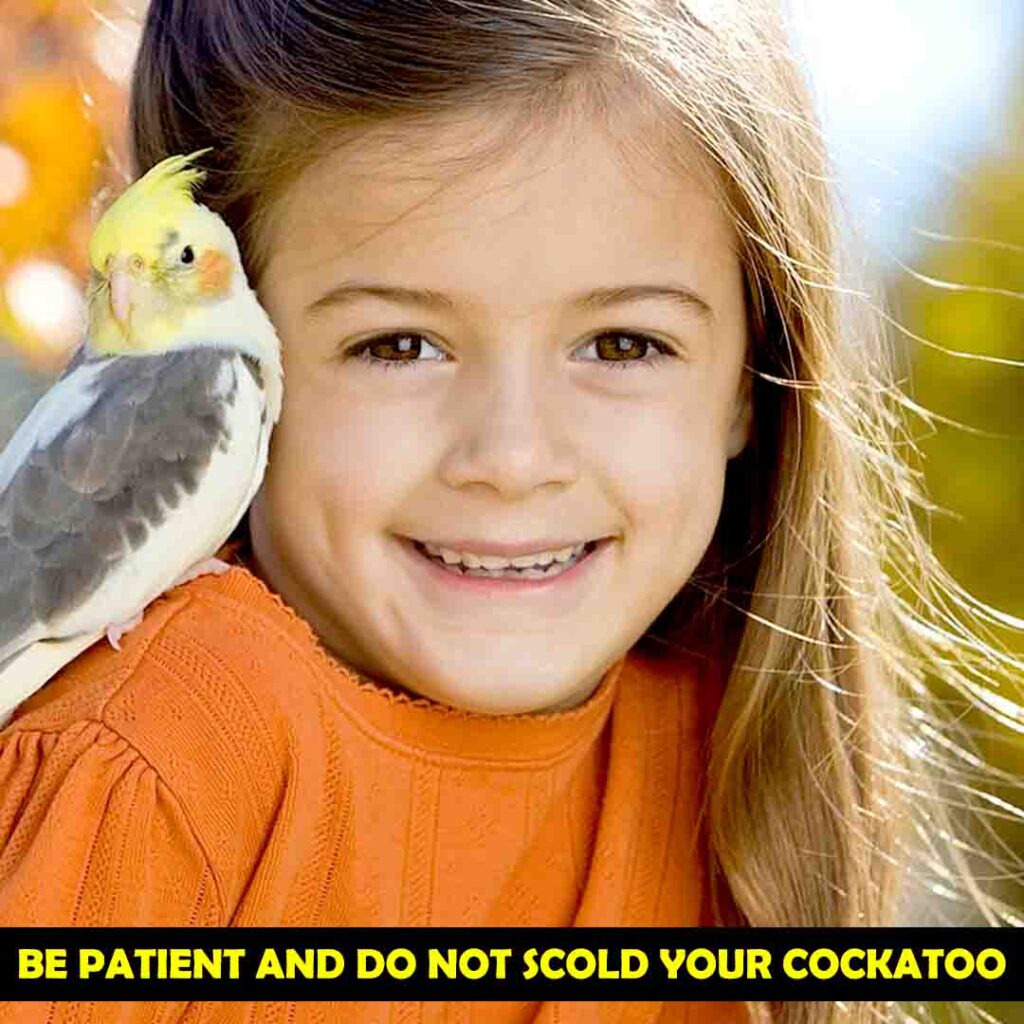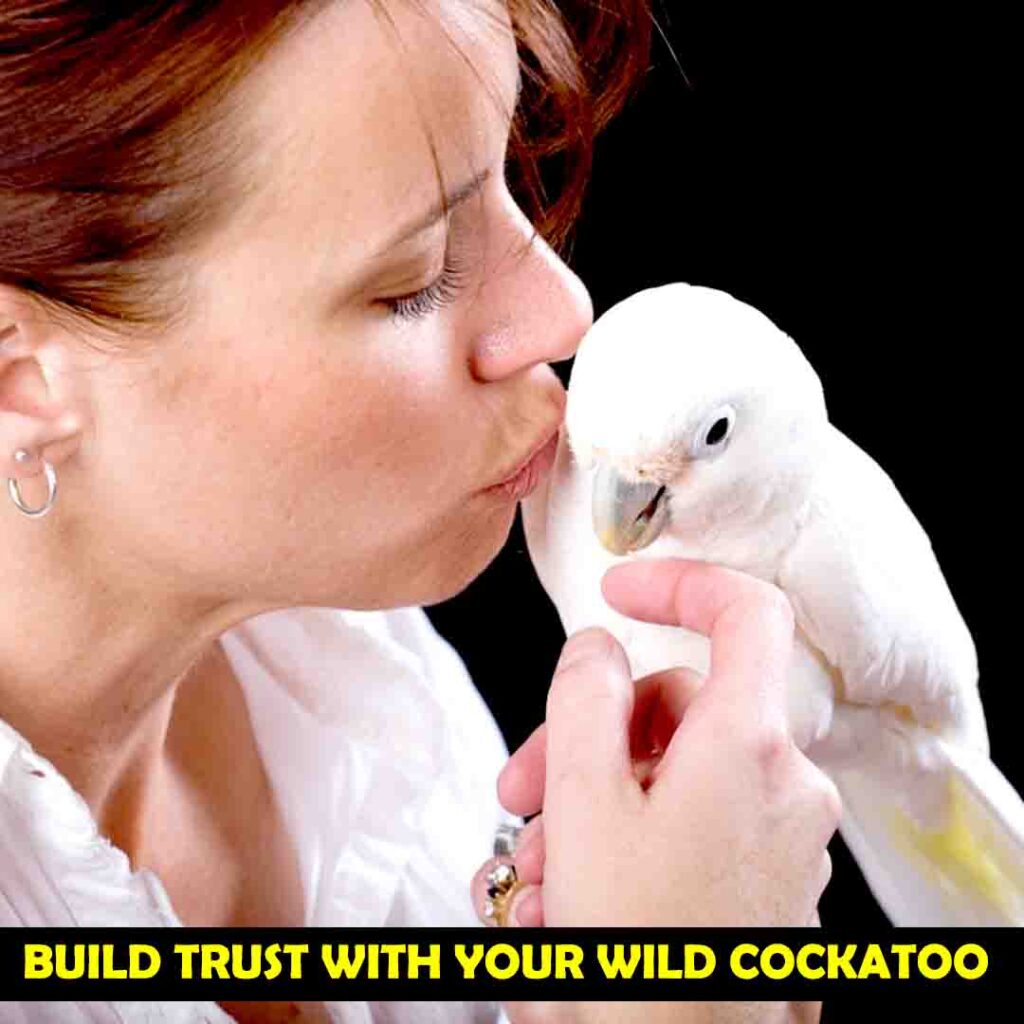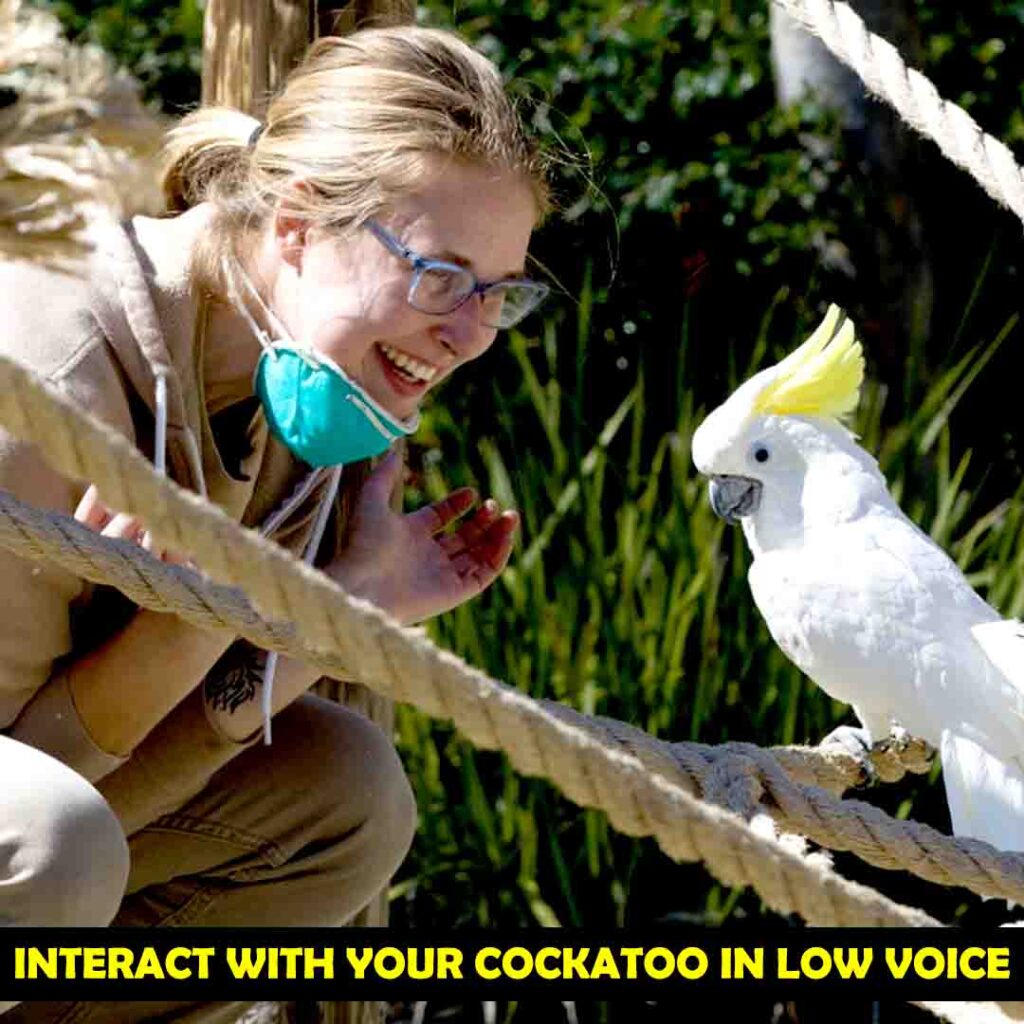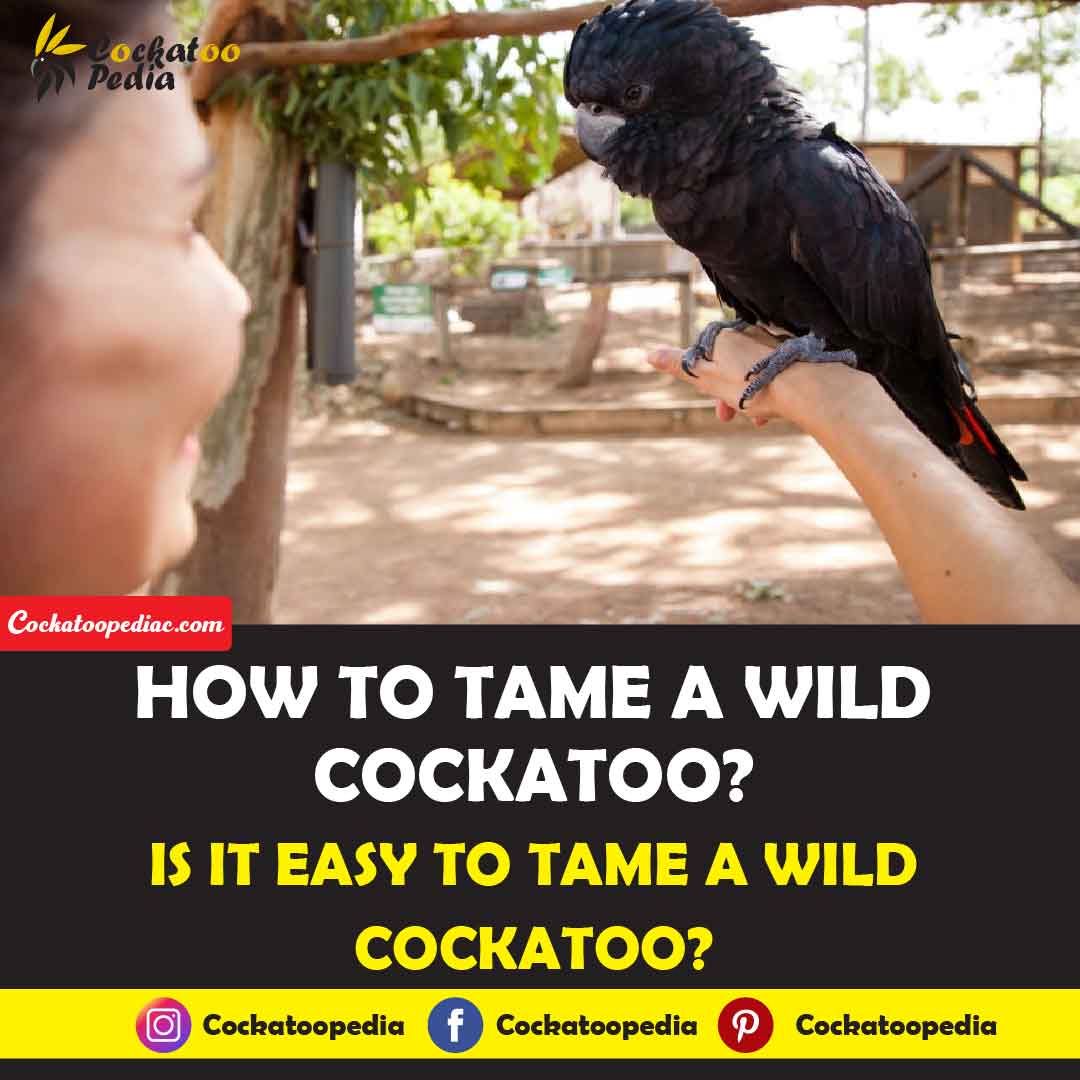Cockatoos are more friendly as compared to other parrot species. Every cockatoo has a unique personality; some cockatoos take less time to tame, while others take longer. However, there are ways to tame any wild cockatoo that always works. I have shared some easy steps for taming wild cockatoos in this article.
Wild Cockatoo can be tamed by building a bond. Give them love and care, win their trust, and they will learn whatever you teach them. Taming a cockatoo demands both time and patience; no matter how hard you try, your cockatoo might not listen to you. The key is persistence, keep trying, and eventually, it will start listening to you.
Steps to tame a wild cockatoo
Let’s discuss all the steps you need to follow to tame your wild cockatoo.
1. Create a stress-free environment
If you have recently bought your cockatoo, it might not easily adjust to the new environment, especially if it came from an abusive environment. You must make the bird feel safe, cared for, and loved. [1] I recommend installing a breeding box in the cage; wild cockatoos often go inside the box if they are scared. You can later remove the cage after the cockatoo becomes comfortable with your presence.
Never shout or talk loudly in front of your cockatoo. No matter how big they look, they are sensitive and can easily get scared. Keep its cage somewhere quiet and away from other animals. Give him at least 2-3 weeks to familiarize himself with you. When you notice his fear is decreasing, it is time to start interacting more but from a distance.

2. Win his trust
Call his name whenever you feed it or pass by its cage. If it is not named, give him a name. Calling his name will encourage him to respond with a sound. Every time you feed it, sit at a distance in front of its cage and watch it while he enjoys his favorite food. If he doesn’t fear you a lot, he will eat in front of you. If not, he will wait for you to leave, and in such a case, it is best to give him more time.
He will start getting closer to the cage when he stops fearing your presence. Keep doing it until he starts sitting comfortably, even when you put the feed in his bowl.

3. Feed with your hand
This is probably the most important step in taming a cockatoo. If your cockatoo comfortably sits on the stick while you refill his feed pot, start feeding him with your hand. He might not accept the feed the first time but keep doing it; he will start eating from your hand.
You will put your hand inside his cage; you won’t be taking him out of the cage. Most importantly, never grab him in your hand; instead, encourage him to come on your hand. Sometimes, during training, wild cockatoos can bite; do not let him bite you, and never shout or punish him.
You can feed him any fruit, vegetable, or seeds but feed him something he likes. Generally, cockatoos like fruits like apples, cucumbers, and strawberries. If you feed him after he is done eating from the pot, he might not be interested in eating from your hand. So you need to create a routine.
Remove the feed pot from his cage at night and feed him every morning with your hand. After he eats from your hand, put back his feed pot. Repeat this process once every day until he desperately starts coming to your hand to eat. Then start doing it 3-4 times a day.
4. Get him out of the cage
Getting him out of the cage can be a bit challenging. If your cockatoo has come from an abusive environment, being taken out of the cage might trigger his anxiety. Don’t rush; start feeding him with your hand out of the cage and him sitting on the edge of the cage door. Make him come on your hand (outside the cage) to get treats.
Once he starts coming on your hand outside his cage, stay close to the cage; In the beginning, he will feel comfortable around his cage. Slowly start taking him away from his cage like in other rooms. Now the goal is to make him explore the outer world and familiarize himself with it. Eventually, he will start enjoying being out and patiently wait for you to take him out. Keep him out of the cage as much as possible.
Keep him open as much as possible; this is really important in taming cockatoos. If he starts flying as soon as your take him out of the cage, you might want to clip his wings. This is neither painful nor unhealthy for him, his flight feathers will fall, and new feathers will grow after molting. He might also have sharp toenails; they can be slightly painful when the cockatoo grabs your fingers to sit on. But you can trim his toenails to make them comfortable.
5. Encourage him to learn
Now by this step, your cockatoo is bonded with you and is ready to learn anything. Cockatoos are smart; they can learn to mimic words, play tricks and solve puzzles. It is recommended to start by teaching him to talk.
You can teach him many words and short phrases. Start with just 2-3 words and repeat them again and again in front of him, especially when you are feeding him. He might start responding to it in a few days. If you feel like your cockatoo is absolutely tamed and trusts you, you can also teach him not to fly away. Make sure you treat him every time he listens to or responds to your commands.

Precautions for taming wild cockatoos
Now by this point, your wild cockatoo is no wilder, and he loves you. Make sure you make him feel loved and take good care of him. To make taming a smoother process, follow the below points.
1. Neglect can cause depression
If you tame your cockatoo, make sure you give him time daily. Cockatoos fall into depression if they are no longer given attention. They start plucking their feathers, and in the worst situations, they pluck every feather below their head. It is recommended to tame your parrot only if you can take care of him long-term.
2. Punishments discourage bonding
Wild cockatoos can be challenging to tame; they can bite sometimes. Treat them like children; instead of punishing them, be kind. Your behavior has an impact on your bird’s personality.
3. Tame cockatoos can get wild
From my experience, I have noticed once a cockatoo is tamed, he remains even if you don’t interact much. But it gets wild if it is kept with a flock of wild cockatoos. This is good because tame cockatoos freed in the wild can blend in with wild cockatoo flocks.
4. Tame parrots sometimes envy other tame parrots
This one is funny; I have several kinds of parrots, and all of them peacefully live together in a room. But as soon as I pick up one of them, the others immediately want to be picked and cuddled. Sometimes they get aggressive with each other if I am not giving them attention. So, if you have multiple parrots, ensure you give every parrot proper attention.
Final Thoughts
Wild cockatoos are not easy to tame but once tamed, they become excellent companions. The only key to taming a wild cockatoo is winning its trust.

